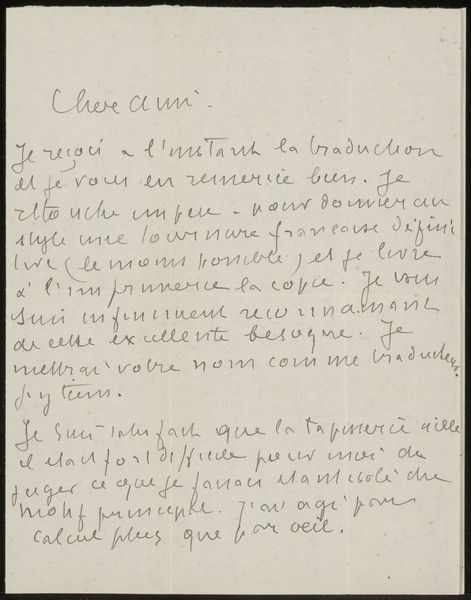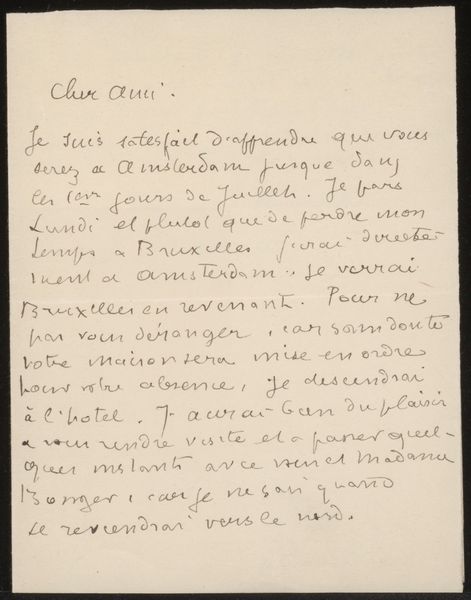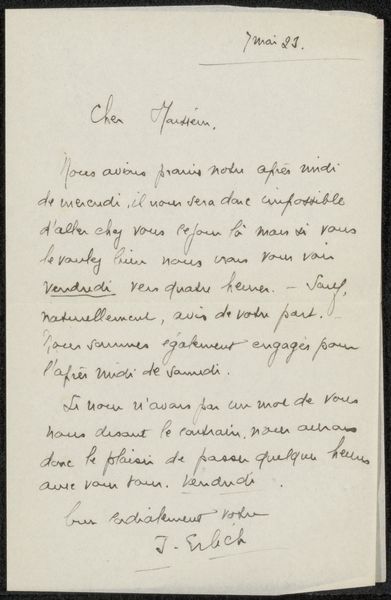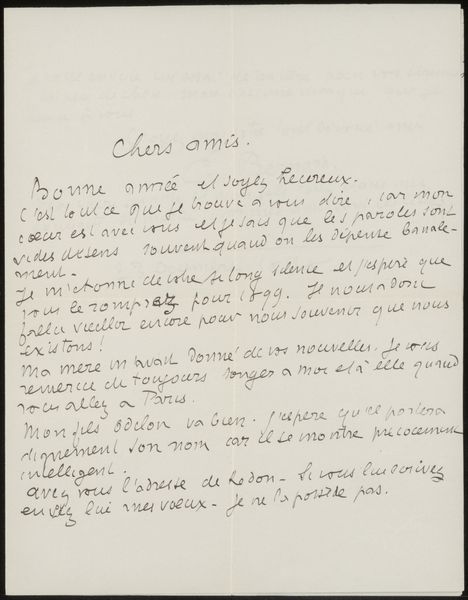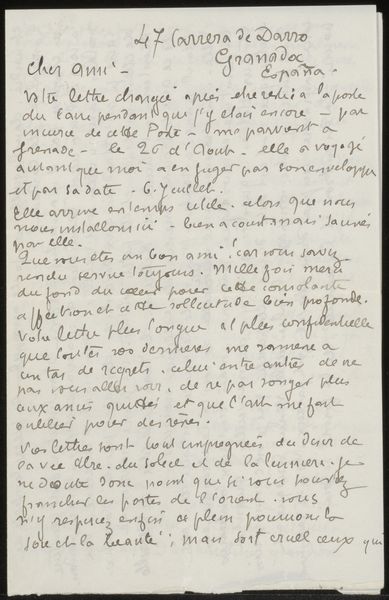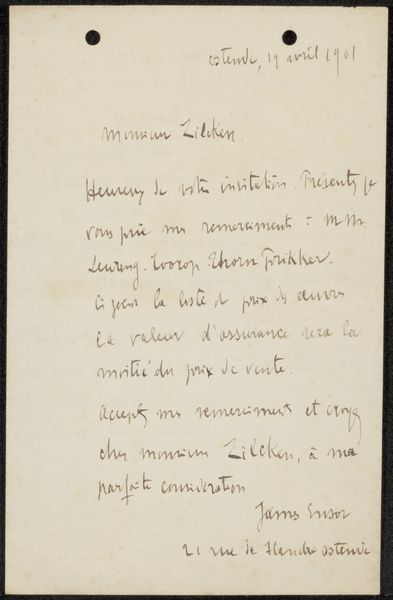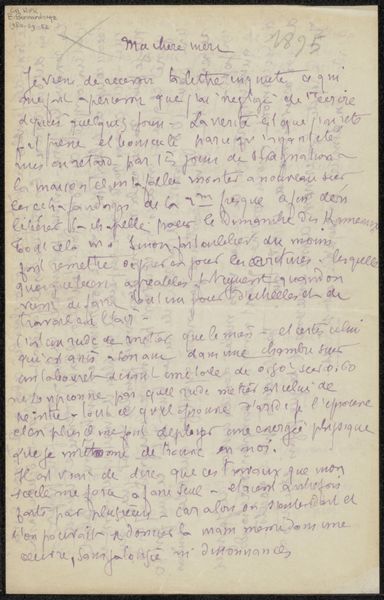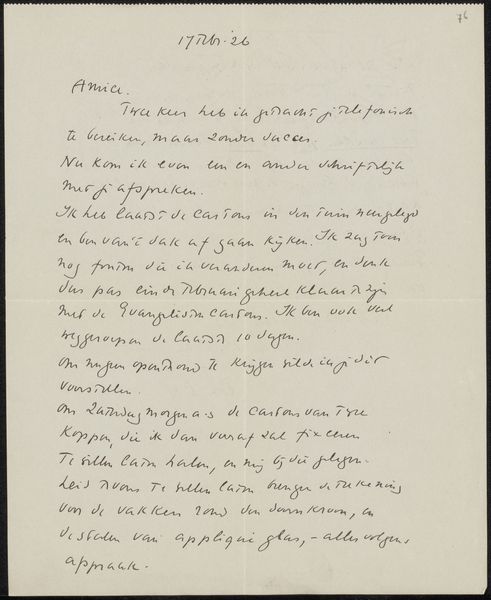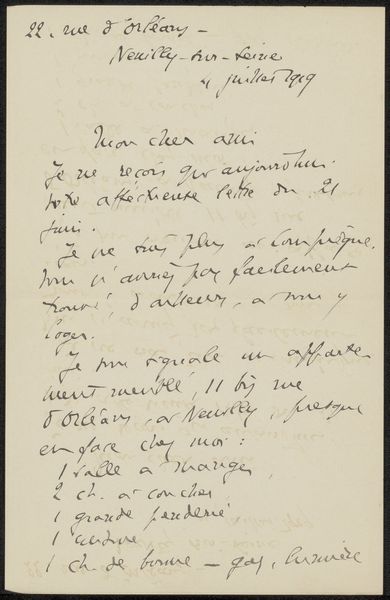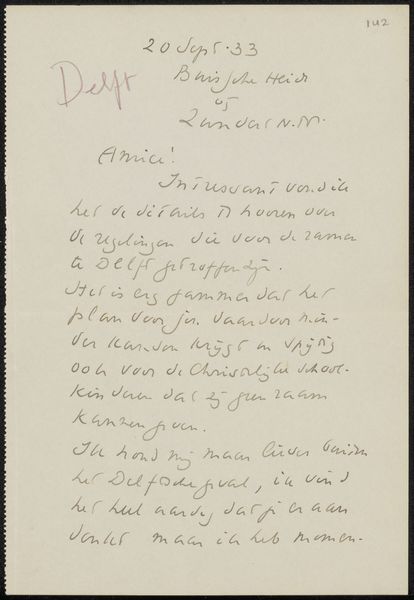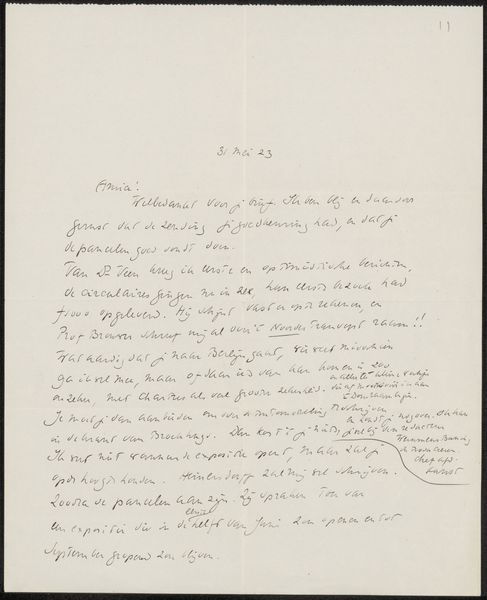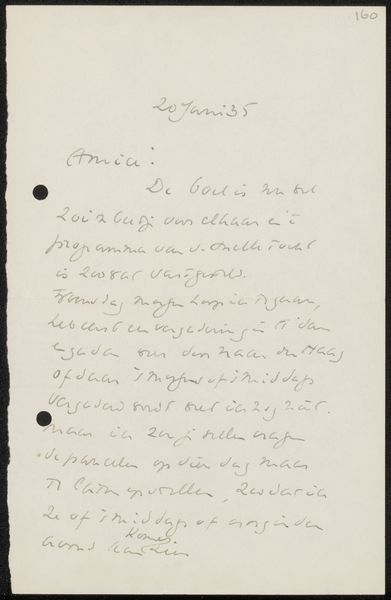
Copyright: Rijks Museum: Open Domain
Editor: This is a drawing called "Brief aan Andries Bonger," created by Emile Bernard sometime before 1922. It seems to be a handwritten letter using pen and ink on paper. It’s kind of interesting seeing someone's handwriting like this... How do you interpret this work? Curator: From a materialist perspective, this work intrigues because it collapses distinctions. It’s not simply a letter, but a drawing; not just personal correspondence, but potentially a carefully crafted object. Think about the materiality: paper, ink, pen. These are readily available, everyday materials, tools of communication accessible to many. Editor: So, the accessibility of materials is important here? Curator: Absolutely. Consider the labor involved: the slow, deliberate act of writing. It's a performative act, isn’t it? Each stroke of the pen contributes to the formation of meaning, both linguistically and visually. This blurs the line between 'high art' and everyday craft, demanding that we look at the means of production and consider the social context. Editor: It does make me think about the writing process, which I hadn't really considered before. What does it mean for this to exist as an art object and a letter? Curator: It begs us to question the value we assign to different forms of labor. Is Bernard simply conveying information, or is he actively *making* something more? How does the intended audience, Bonger, factor into the piece's production? Considering that this "letter" made its way to the museum and is regarded as a valuable artwork makes us think about value production, consumption and exchange in a new light. Editor: I see what you mean. It really makes you think about the process behind it all. Thanks for pointing out these things! Curator: My pleasure! Considering the labor and material transforms how we understand art itself.
Comments
No comments
Be the first to comment and join the conversation on the ultimate creative platform.
